If you’re a regular at Short of the Week, or on the film festival circuit, then you’ve probably already encountered the work of David Kamp. A Sound Designer and Composer whose worked with some of the most interesting names in independent animation, he’s credited on at least 10 S/W picks over the last 10-years, with his participation in a short acting almost like its own unique stamp of approval.
As a long-time fan of his work, I’ve wanted to get him on our site to discuss his process for a while now. With this new interview series aiming to shine a light on all the different filmmaking roles (not just the director) involved in bringing a short film to the screen, it felt like the perfect opportunity to finally speak to the sound artist about what attracts him to short films, what he looks for in a collaboration and how he measures success.
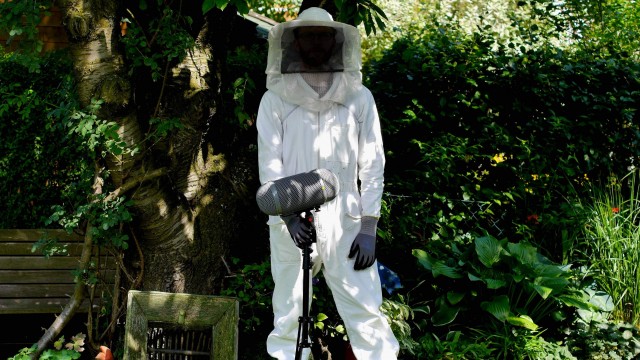
You run the sound design and music studio Studiokamp and work on a lot of animated shorts, can you explain your role in the creation of a film, for people who may not understand what it entails, especially the sound design part?
Sure! I often take care of all audible aspects of the project. In practice, I usually start from silence since animation has no production sound recorded on set or other pre-existing audio to work with. I really like how animation allows me this blank slate each time, and I get to define, create and build the entire soundscape of the film. My goal is always to provide each film with a unique sound world and sonic style that fits the director’s vision and the visual style or story (if any).
Since that “sound approach” needs to be applied across all sound elements, I often personally handle or at least supervise all sound post-production disciplines, which are traditionally (in the feature film world) split up into various departments: music, foley, sound design, dialogue editing, and final mix. Sometimes I collaborate with others not part of my studio, so there might be a film where someone else composed the music, for example. For longer films, I recently started getting some fantastic foley artists involved as part of my team, who specialize in recording physical props in sync to picture since they are very efficient with some basics like footsteps, cloth movements, etc.
I always see their recordings as material to work with creatively, so I might mute things they recorded if they feel cluttered or process them as needed for each film moment. During the final mix, I balance all sound elements to blend nicely, ensuring the film sounds good in cinema, T.V., tablets, etc. Together with the director, the creative process up to the final mix is often about figuring out which sound element leads in each moment of the film.
“In sound, anything can express emotions”
One scene might be intense and music-focused; others might be very quiet and intimate, with quiet ambiances and subtle foley. Much of it is also about emotion; how do we want specific moments to feel? How do we express that feeling? In sound, anything can express emotions, whether it’s dialogue, foley, sound design, or music. This might be obvious for music, but even a footstep can be performed to feel decisive, timid, hesitant, or triumphant. In some scenes, it is essential to think about and consider these details. More abstractly designed sound elements are closer to music in that regard.
Since I am a trained composer, I try to edit and design any non-music sounds with a “musical mindset.” For example, I worked on a short where a vacuum robot was the main character. In some scenes, there was big orchestral music, and to ensure the robot sounds didn’t disturb the music, I designed a virtual instrument that allowed me to “play” the vacuum sound, in key and matching the music, on the keyboard. I used that sound regarding pitch, timbre, and dynamics like it was just another instrument in the orchestra.
Another fun aspect of working in animation is that I often encounter challenging and abstract visual elements requiring sound without real-world reference to how they might sound. In a recent animated project for the AMNH in New York, I designed the sounds of DNA strands forming. On other projects, I’ve designed the sounds of a soul leaving the body, or the footsteps of walking buildings, to name a few.
How did you first get into working on short films, and what is it that attracts you to the format?
I’ve been involved in music since childhood, so it was always clear to me that I’ll do something related to sound and music. I have a degree in music composition from ICEM, but ever since I started running my own independent sound studio almost 15 years ago, I have mainly focussed on sound for animated shorts.
The main reason for that was that each film had a unique artistic, often very personal perspective – the variety of subjects and visual styles fascinates and inspires me. In addition, I like how there is usually a direct line between myself and the film’s director in animated shorts. This is great for feedback and is not always the case in bigger feature films. I also really like the comparably quick succession of projects, diving into something with a particular sound design or music style, and then jumping onto the next film that might be the exact opposite regarding the role or style of sound.
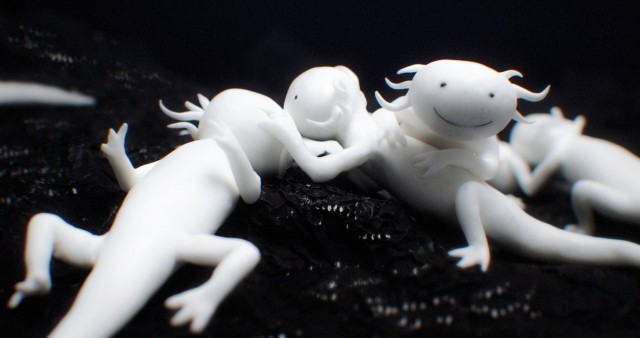
Kamp worked as composer, foley artist, re-recording mixer + sound designer on Jonatan Schwenk’s short film Zoon
The shorter duration also allows the exploration of relatively simple ideas that are tricky to pull off in longer films: One example is the film Zoon, which is just a single long build in intensity. It starts extremely quiet, with the tiniest close-up sounds of a few creatures, and develops into a loud and glorious choral finale – fully using the extensive dynamic range of theatrical sound systems in cinemas.
“This creative variety keeps me on my toes”
Before even considering working in film sound as a profession, I was always interested in visual art, comics, and other forms of visual artistic expression. This naturally drew me towards animation since I liked how the films I work on tend to be so visually unique – this pushes me in many different directions creatively and forces me to explore all sorts of sound “rabbit holes” I might not have explored otherwise. This creative variety keeps me on my toes and my work exciting.
When I look back over your extensive credits, I see some of my favorite animated shorts listed – from David OReilly’s Please Say Something to Joseph Wallace’s Salvation has no Name – how does your involvement with these projects come about, and is there something you usually look for when deciding which projects you want to work on?
It’s always different. Please Say Something, for example, happened after I met David at a film festival. I was immediately excited by some W.I.P. snippets of his upcoming short (Please Say Something) after he showed them and proposed that I help him with sound design, foley, and mix. Neither of us thought the film would end up winning a bear at Berlinale, especially since he made that film on his own, in his Berlin bedroom on a laptop. My more recent collaboration with Joseph Wallace came about because we have some mutual friends, and both enjoy each other’s work. For my most recent project, Sean Pecknold reached out from L.A – we had worked on a “very short” short more than ten years ago and then had pretty much no contact with each other since, but we followed each other’s work online.
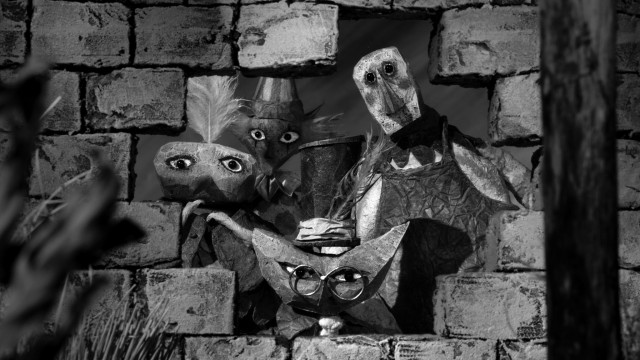
Kamp worked as sound designer + sound mixer on Joseph Wallace’s Salvation Has No Name
Overall, various factors make me decide whether to work on a film. There are obvious ones, like does the schedule and budget work for me, but also very personal things, like if I like the visual style of that director’s other work. For narrative shorts, I consider if the film’s story or message resonates with me. Sometimes this is political like the message of Salvation Has No Name, about unjust prejudice towards foreigners and refugees. Other times, I like the humor of a project, like the films I made with Nikita Diakur (Ugly, Fest & Backflip). After multiple mutual projects, the friendship and well-established working relationship with a director can be a deciding factor too.
At what stage of production do you join a project? Is it all confined to post-production or are you involved in the planning process or the shoot?
I usually get involved early, often in the planning stage, sometimes even the grant application/funding process, so I can advise on the best audio post process and help figure out the ideal timing of my involvement. From a creative perspective, I prefer to be inspired by more finalized images, but there are cases where I start designing sounds or composing music during the animatic stage.
An extreme example was the short film Island I made with Max Mörtl and Robert Löbel (Wind, Link). Since design, picture editing, animation, and sound were musically driven, rhythmic, and tightly interwoven, they edited to my temp sound and then passed it back to me. I added new sound details, sent them a new mix, and we repeated that process a few times. But even before that, many visual character designs of the little creatures inhabiting the island were inspired by the sounds I designed for each character.
Of course, on many projects, there is no significant advantage of sound being involved so early. However, a core idea of Island is that all the characters create a song from their voices and the sounds they create are due to their bodies and physical properties. The island’s background ambiance is also constructed that way.
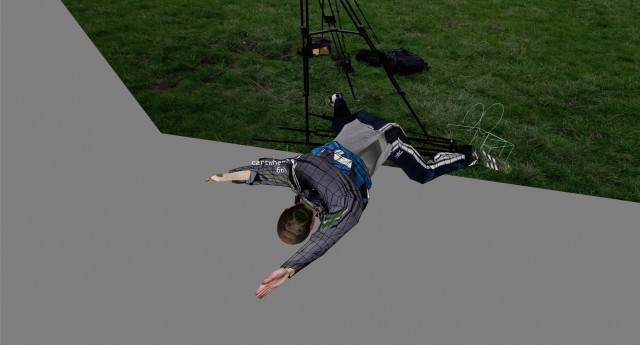
Nikita Diakur’s Backflip provided some interesting new challenges for Kamp
Another unique case was the film Backflip by Nikita Diakur. The film’s humorous premise is that an animated AI Avatar version of Nikita tries to learn a backflip through machine learning. To realize the film’s sound, we used many AI and Machine learning tools, from cloning Nikita’s voice, using a text-to-speech system, to generate all dialogue to using an AI tool to generate the musical themes and motivational music for a longer montage sequence in the film.
Visually he captured his own living room in Leipzig and rebuilt/modeled it in 3D, which was the film’s primary location. Similarly, we thought it would be fun to record all “audible” objects in his flat to create a semi-synced sound library, which we then used for all the foley and sound effects of the film. Consequently, he and I spent a few days at his flat and recorded a ton of details – the fan of his actual PC at different speeds, the room’s ambiance sound at different times of day, his footsteps on his floor, and even Nikita’s own head hitting many different objects and surfaces in the apartment – to match what the 3D avatar in the goes through when trying to learn the backflip.
This audio post process was very unique to this project, of course – not every director wants to personally hit their own head on multiple surfaces when there are much less painful ways to recreate a similar sound, and not every sound designer is willing to approach a film’s audio post in this obscure and time-consuming way.
Other projects I approached more straightforward, like – Nicolas Menard‘s Wednesday with Goddard, Mountain by Studio AKA / Dave Prosser, Love by Réka Bucsi, K.N.O.B. by Mikey Please, or I Am A Robot by Sean Buckelew. In all of these, I only started to work on the film after I received the final edit with close to final color grading, etc.
I know you’ve picked up several awards for your work, but how do you personally measure the success of a short film you’re involved with?
Awards and festival selections are certainly gratifying for me, and I am thankful for all of them.
I also consider a film a success if I can look back at it after a few years, and still feel amazed by its visual world or happy with some sound decisions I made.
“When a film I worked on makes it out of the animation bubble, I consider that a success too”
Beyond that, I enjoy when animated films I am involved in are seen by audiences outside of the animation world, which sometimes happens at free and public film screenings or when a film gets picked up by a TV channel or streaming service. Many significant and meaningful animated shorts mostly live in our small parallel world of film festivals and niche video channels or social accounts. Even though these short films have amazing visuals and deal with important and relatable subjects, few people ever get to see them. So when a film I worked on makes it out of the animation bubble, I consider that a success too.
At Short of the Week we’re always looking to give emerging filmmakers advice on how they can improve their work, with your expertise in sound and music, do you have any words of wisdom for developing talent? Any common issues with sound/music that you see time and time again in short films?
I’d say it’s beneficial to try to find a sound designer or composer whose work speaks to you and who you enjoy working with. Since that relationship will grow over time, you’ll develop a mutual understanding and shared vocabulary for sound – very helpful since sound can sometimes be a rather abstract thing to talk about. Knowing what the other person means by certain sound related words or when mentioning references is helpful and speeds up the process.
“This is a case where less is more”
Common issues with music and sound are very subjective, the boring technical stuff aside. But one little animation-specific thing I never like is when, in an attempt to give the character a voice (but no dialogue/language), every thought and movement of an animated character gets a voice reaction like “uh, ahh, hmmm, and oh.” To me, this is a case where less is more, an approach I try to incorporate in many aspects of my work. Occasionally, I strip away some sound elements to see if the scene works better without them. Sometimes that’s the case, and it adds clarity by giving whatever is essential the space it needs. Other times, it then feels like something is missing. Finding that balance is a necessary process for me.
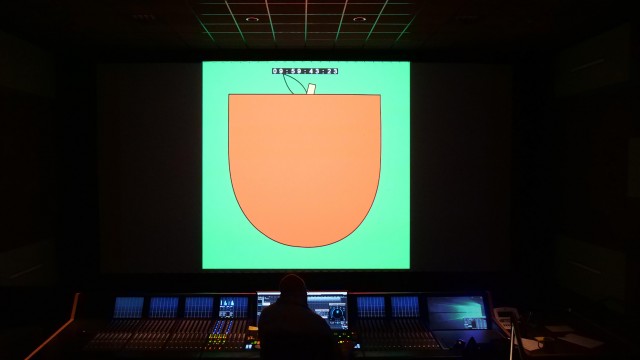
Kamp in the studio working on Igor Bastidas’ The Big Apple
What are you currently working on?
Multiple animated short films and non-film projects, in various planning and production stages.
Next, I am starting production on a new project with Nikita Diakur, where all sound will be entirely real-time generated. A very different approach than linear sound design to picture, since everything needs to be designed with lots of variations to work in all possible combinations and versions of a scene – just like game audio.
I also do commissions for commercial clients every now and then, so there are a few of those on the horizon too.
Last, but not least, I currently spend a good chunk of my time with my 1.5-year-old son. He’s still learning to talk, and witnessing him develop ways to express himself through sound and language is absolutely fascinating. In a recent project, I may or may not have used a processed sound recording of him as a creature sound effect.
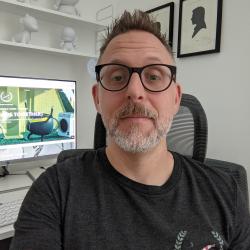 Rob Munday
Rob Munday